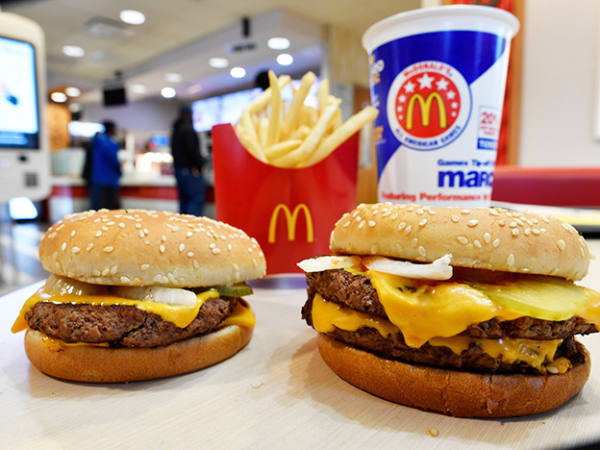- Benefits from capital releases, but revenue growth is flat
- Costs seem to be spiralling
The story of the pandemic for US banks has centred on the trading split between those institutions with skin in the markets – for example, any bank with a significant investment banking, trading and private equity lending presence – and those without.
Banks that could capitalise on the boom in mergers & acquisitions and initial public offerings, saw revenues at their investment banking arms soar during the year. However, such outperformance never comes without a caveat, and it will be of some concern to investors that the earnings picture for US banks – when the flattering effect of disposals and benign capital releases are stripped out – is turning distinctly cloudy. This is particularly true given that the results do not fully capture the impact on consumer and corporate customers of the Omicron wave in the US.
Overall, it is hard to escape the impression that having dealt with the bulk of the uncertainty of the past two years, US banks are still left with a series of unresolved strategic problems.
The labours of Citigroup
Citigroup (US:C) illustrates the paradoxes of the earnings season perfectly. The giant lender, which runs a full-service operation from counters to investment banking, bounced back with net income more than doubling to $22bn (£16.1bn) on revenues of $71.9bn for the year. While that looked impressive on paper, the results showed several contradictory trends. To begin with, the bank’s bottom line continued to benefit from the release of reserves set aside to cover potential bad loans accrued at the height of the pandemic – releases from reserves for the full year came to $8.8bn, while bad debt provisions continued their long downward trend. Otherwise, it is fair to say that investment banking aside (where revenue rose by 30 per cent to $7.5bn), Citigroup struggled to build momentum in its core corporate and consumer markets.
The interesting question is whether this is simply a pause in activity after a frenetic year disposing of assets in the wake of a strategic review of the business, or whether the combination of looming rate rises by a newly hawkish Federal Reserve, combined with a lingering pandemic impact on personal lending and a higher cost of living are making themselves felt.
The completion of the review, plus the disposal of seven of the 13 Asian businesses that had been put up for sale, along with the newly announced disposal of its Mexican consumer business, should offer a bit more clarity as the year progresses.
Contrary to many forecasts, a consumer lending boom did not really materialise during the year in the US, a fact that was clear in Citigroup’s results. The impression that Citigroup is dining out on fading benefits is confirmed by the fact that top-line sales have gone into reverse, down 5 per cent, while expenses show a rising trend of 9 per cent. The shares have underperformed its banking peer group by 25 per cent and currently rate at a forward price/earnings (PE) ratio for 2023 of eight times Berenberg’s forecasts for earnings per share (EPS). This might have some appeal for investors looking for value situations.
JPMorgan Chase poses valuation dilemmas
Another Wall Street titan with strategic issues to consider is JPMorgan Chase (US:JPM) after reporting a similar blend of pandemic-related capital release benefits, albeit with respectable, but not outstanding, revenue growth. It, too, booked around $1.6bn of benefit from capital reserve releases during the quarter. The view that the bank faces basic headwinds seems to be borne out by the results, which showed muted demand for commercial loans.
In a troubling trend for the main banks, costs seem to be rising at an exponential rate. JPM is now guiding towards total costs for the full year 2022 of $77bn, with over $17.9bn booked in the fourth quarter of 2021 alone. This represents a clear upward creep at a time when its core revenues are essentially flat. This drew the ire of analysts, who noted that exceptional costs seem to be accepted as “normal” rather than as a way to drive future growth. The problem for investors is that in valuation terms, JPMorgan still trades at a premium to its peers of 15 per cent, according to Berenberg estimates. That makes the forward rating of 12.7 for 2023 increasingly priced for perfection. In other words, management has to deliver, or face the ire of the markets in 2022.
Wells Fargo: the national barometer
Wells Fargo (US:WFC), among all the US banks, is the one with a truly national presence (the US banking market is heavily fragmented down to a regional level) and so justifies its status as the key institution whose performance reflects the underlying state of the US economy. So far this year, Wells’ share price has consistently outperformed that of its big bank peers – up by 12 per cent since the start of 2022, beating the pack quite easily – and the results were the first look at whether this strong run is underpinned by the numbers.
The market’s enthusiasm might be related to the efforts of chief executive Charles Scharf, who has now been in charge for two years, to control costs. The absence of a big investment bank will have helped, given the upwards pressure on salaries here. Non-interest costs fell by more than $1.6bn to $13.2bn in the quarter. Cost-cutting measures over the course of the year were even more impressive, bringing costs down by $3.8bn, overall, to $53.8bn – or an average of $1bn a quarter. That makes Wells the only major bank not to see progressive inflation in its cost of business. In fact, cost savings are the greatest source of earnings growth after a largely flat year.
It has disposed of some businesses, including an asset management arm, but being the nation’s Main Street bank gives investors a streetside view of the economy. It's fair to say that this vista is obscured, though. The final quarter, which saw a spike in coronavirus infections as the Omicron wave hit, seems to have suffered the most from consumers drawing back from purchases. Although big-ticket items are usually bought in the second quarter – houses and cars are a prime example – the 8 per cent decline in home lending income to $1.84bn in the fourth quarter was a notable sign of consumer nervousness.
Analysts at Jefferies forecast EPS for 2022 of $4.15, which gives a current forward PE ratio of 14. That places WFC at the upper end of the sector for valuation, which reflects the bank’s ability to control its costs effectively.
The squid adds more black ink
The almost pure investment, advisory, trading and wealth management focus at Goldman Sachs (US:GS) always puts the bank on a firm footing when the markets are good. The serious backlog in merger and acquisition (M&A) deals meant that revenues in its investment banking division surged by 45 per cent to $3.8bn for the fourth quarter, and 58 per cent higher for the year at $14.9bn, as deals rushed to be completed before the year-end. The pipeline for deals should spill over into the first quarter of this year.
However, even Goldman Sachs followed the trend for mixed performance as the main part of its business, Global Markets, saw increased revenues of barely 4 per cent to $22.8bn as lower demand for interest rate and credit products outweighed investor appetite for commodities and mortgage lending. In common with the other investment banks, costs also rose strongly; up 10 per cent at $31.9bn. The problem with rising expenses is that this tends to cancel out the operational gearing that investment banks should be able to generate from their own lending, trading and advisory capabilities, combined with a fixed cost base.
Goldman’s performance in this regard is a case in point. For example, the bank’s efficiency ratio (bank expenses/net income) came in at a poor 53.8 per cent, compared with 65 per cent in 2020. This is mainly due to higher compensation costs that management argues reflect a strong performance. However, given that the share price has fallen back to levels last seen at the beginning of the summer, the impression remains that the employees are currently having a better time than the shareholders.
Consensus forecasts compiled by FactSet give EPS for 2022 of $41, giving a PE ratio of 8.8. That places Goldman at the lowest end of valuations for big US banks, although the discount reflects its lack of a major deposit base and the (often higher) risk the bank runs through its own book via proprietary trading activity. Like its Wall Street brethren, Goldman Sachs’ year will be determined by both the direction of interest rates and the resulting impact on M&A deals.
Bank of America and Morgan Stanley hum along
Bank of America (NYSE: BAC) and Morgan Stanley (NYSE: MS) both released their results later than the pack. Though both banks share broadly the same issues as comparable peers such as JP Morgan and Citigroup, Morgan Stanley seemed to avoid the worst of the cost inflation experienced by the other large banks. The bank’s expense ratio at 67 per cent is broadly in-line with its long-term average, reflecting its focus on wealth and investment management rather than trading and broking – which is a positive, as tranquil markets in 2021 meant reduced opportunities for trading profits. By contrast, the investment and wealth management divisions both had an excellent year with net revenues increasing by 67 per cent to $6.2bn, and 27 per cent to $24.1bn, respectively, through a mix of acquisitions and organic fund inflows.
Morgan Stanley shares gained 46 per cent in 2021 and attaining further altitude is likely to depend on how well the bank’s investment banking activities have performed. Analysts reckon that based on its current forward P/E, the bank has a current fair value of around $111, implying some growth from its current base. The shares can be bought at a PE of 11.7, placing it in the mid-range for the major US banks.
Meanwhile, Bank of America saw the benefit from the improvement in the credit environment, with releases from its reserves to cover potential bad debts boosting net income in the fourth quarter by $851m. The banks loan balances increased by $51bn to $979bn at the year-end. The increase in the loan book looks set to feed through into higher costs this year, with interest rates on the rise, and Jefferies’ analysts predict that these will be flat this year with a one per cent rise in 2023. The main impact of an increase in the bank’s risk weighted assets is that, at the risk of narrowing its equity base, it reduces the scope for share buybacks. Despite that issue, Jefferies’ forecasts that the tier one capital ratio – a key measure of a bank’s financial stability - will remain steady at 10.5 per cent.
Current consensus forecasts put Bank of America on a PE of 13 times expected EPS for 2021, which places it towards the top end of the sector’s valuation list.
Overall, the season was won by lenders that were able to capitalise on the backlog of work created by the pandemic. It will be interesting to see how each will respond to a higher interest rate environment and what impact this will have in the credit growth that has spurred banking profits in the US over the past decade or so. In other words, while US banks are profitable, the fat fees and easy money that sustained earnings growth is not going to continue and it remains to be seen if investors will be so indulgent of their rising operating costs under those circumstances.







